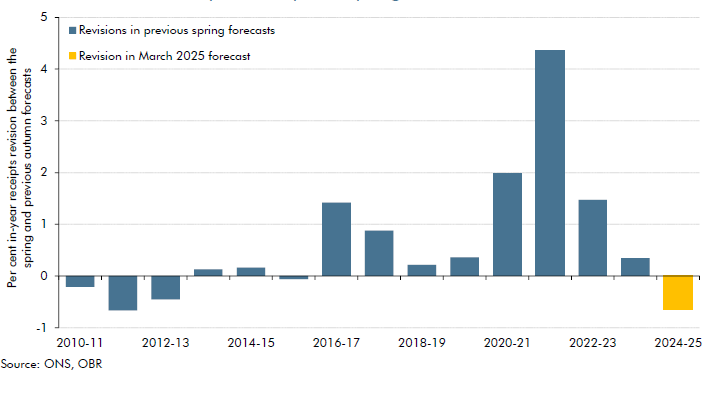Inheritance tax (IHT) is levied on the value of all the assets in an individual’s estate on death, after deducting any liabilities, exemptions and reliefs. Assets left to a spouse or civil partner of the deceased are usually exempt, as are assets left to a charity. In 2024-25 we forecast that IHT will raise £8.3 billion. This represents 0.7 per cent of all receipts and is equivalent to 0.3 per cent of national income.
The rate of IHT is normally 40 per cent on the value of an estate above a threshold of £325,000. This threshold is frozen up to and including 2029-30. Any unused threshold may be transferred to a surviving spouse or civil partner, increasing their combined threshold to up to £650,000. There is an additional transferrable main residence nil rate band of £175,000 available when a home is left to children or other direct descendants. The rate of IHT is reduced to 36 per cent if 10 per cent or more of the net value of the estate above the threshold is left to charity.




